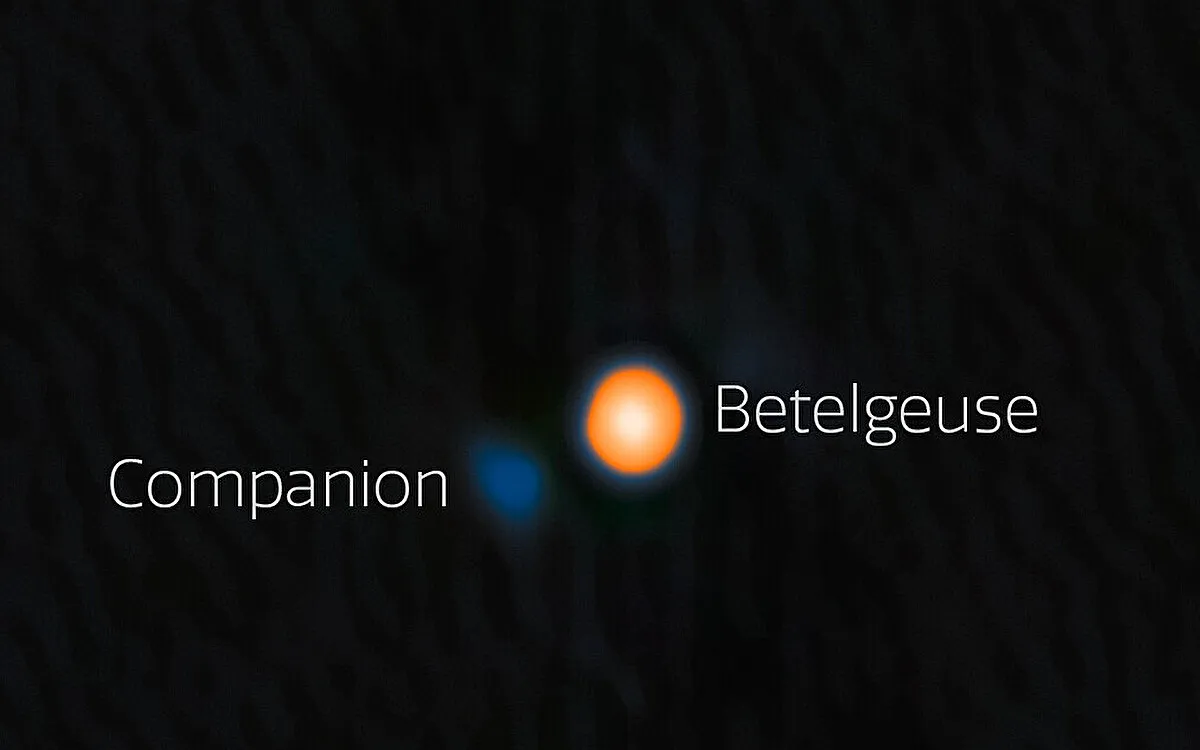
Betelgeuse, one of the most luminous stars in the night sky, is not only a sight to behold but also the closest red supergiant to our planet Earth. With a staggering volume that spans approximately 700 times the radius of the sun, Betelgeuse has piqued the interest of astronomers and stargazers alike. Despite its relatively young age of ten million years, which is considered youthful in the realm of astronomy, Betelgeuse is nearing the end of its stellar lifecycle.
Situated in the shoulder of the constellation Orion, Betelgeuse has been observed by humans for millennia. Its distinctive brightness variations have been documented throughout history, making it a subject of fascination for both amateur astronomers and professional scientists. Researchers have established that Betelgeuse exhibits a main variability period of about 400 days, alongside a longer secondary period of roughly six years.
In 2019 and 2020, Betelgeuse experienced a significant drop in brightness, an event that became known as the Great Dimming. This occurrence led to speculation that the star was on the verge of a supernova explosion. However, subsequent investigations revealed that the dimming was caused by a massive cloud of dust ejected from the star itself, dispelling fears of an imminent stellar death. The resolution of the Great Dimming mystery ignited fresh interest in studying Betelgeuse, prompting scientists to analyze archival data more thoroughly.
One groundbreaking analysis suggested that Betelgeuse's six-year variability could be linked to the presence of a companion star. Despite searches conducted by the Hubble Space Telescope and the Chandra X-Ray Observatory, no companion was detected for quite some time. However, a breakthrough came when a team of astrophysicists led by Steve Howell from NASA Ames Research Center successfully identified the companion star using a cutting-edge speckle imager known as 'Alopeke'.
Alopeke, which translates to "fox" in Hawaiian, is mounted on the Gemini North telescope, part of the International Gemini Observatory. This innovative speckle imaging technique employs very short exposure times to counteract the distortions caused by Earth's atmosphere, enabling astronomers to capture high-resolution images. The combined power of the Gemini North's 8.1-meter mirror and this imaging method allowed the faint companion star to be directly observed.
Through meticulous analysis of the light from the companion star, Howell and his team determined its characteristics. They found that the companion is approximately six magnitudes fainter than Betelgeuse in the optical wavelength range and possesses an estimated mass of about 1.5 times that of the sun. It appears to be an A- or B-type pre-main-sequence star, indicating that it is a hot, young blue-white star that has yet to initiate hydrogen burning in its core. Remarkably, this companion star orbits at a distance roughly four times that between the Earth and the sun, nestled within the outer extended atmosphere of Betelgeuse.
This discovery marks the first time a close-in stellar companion has been detected orbiting a supergiant star, showcasing the exceptional resolving power of Alopeke. Howell noted, “Alopeke achieved what no other telescope has managed before; predictions regarding Betelgeuse's companion suggested it would be nearly impossible to image.” This groundbreaking finding enhances our understanding of the life cycle and impending demise of this iconic red supergiant star.
It is believed that Betelgeuse and its companion star were born around the same time. However, due to strong tidal forces, the companion star is expected to spiral into Betelgeuse, ultimately meeting its end within the next 10,000 years. This discovery also provides insights into why similar red supergiant stars exhibit periodic brightness changes on extended time scales. Howell expressed optimism for future studies, stating, “This detection was at the very extremes of what can be accomplished with Gemini in terms of high-angular resolution imaging. This success opens the door for other observational pursuits of a similar nature.”
Martin Still, program director for the National Science Foundation’s International Gemini Observatory, added, “The speckle capabilities provided by the International Gemini Observatory continue to be a remarkable tool available to astronomers for various astronomy applications. Solving the Betelgeuse mystery, which has puzzled scientists for centuries, is a significant achievement.”
Another opportunity for researchers to study Betelgeuse's stellar companion will arise in November 2027, when it reaches its maximum distance from Betelgeuse, making it easier to detect. Howell and his team are eager to conduct further observations before and during this event to deepen their understanding of the companion star and its relationship with Betelgeuse.